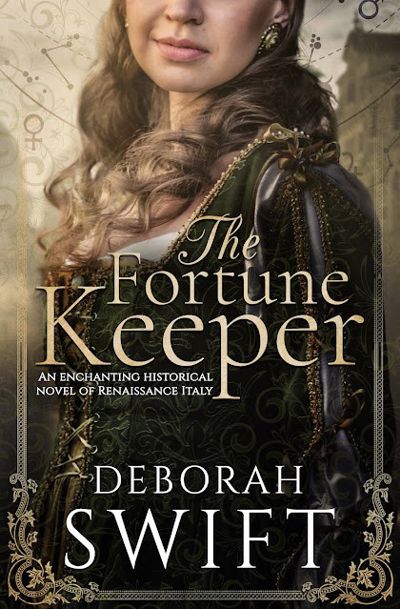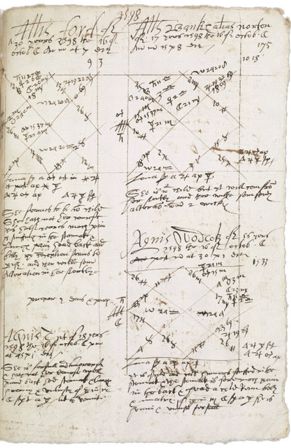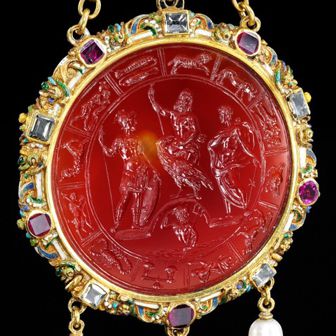
Count your nights by stars, not shadows ~ Italian Proverb
Winter in Renaissance Venice
Mia Caiozzi is determined to discover her destiny by studying the science of astronomy. But her stepmother Giulia forbids her to engage in this occupation, fearing it will lead her into danger. The ideas of Galileo are banned by the Inquisition, so Mia must study in secret.
Giulia’s real name is Giulia Tofana, renowned for her poison Aqua Tofana, and she is in hiding from the Duke de Verdi’s family who are intent on revenge for the death of their brother. Giulia insists Mia should live quietly out of public view. If not, it could threaten them all. But Mia doesn’t understand this, and rebels against Giulia, determined to go her own way.
When the two secret lives collide, it has far-reaching and fatal consequences that will change Mia’s life forever.
Set amongst opulent palazzos and shimmering canals, The Fortune Keeper is the third novel of adventure and romance based on the life and legend of Giulia Tofana, the famous poisoner.
‘Her characters are so real they linger in the mind long after the book is back on the shelf’ – Historical Novel Society
NB This is the third in a series but can stand alone as it features a new protagonist. Other two books are available if reviewers want them.

Medicine and Astrology in the Renaissance
The third book in my Italian Renaissance series, The Fortune Keeper, begins the story of Girolama Spera, Giulia Tofana’s daughter, and a real historical person who was also accused of poisoning a generation of men, by following in her mother’s footsteps.
She was known as ‘The Astrologer’ – hence the title of the book. At the beginning of the book, Girolama (nicknamed in my book Mia, to avoid confusion with her mother, Giulia) is embarking on her study of astrology with Bravaggio, an astrologer who is much influenced by the work of Galileo.
Astrology in the time of Galileo
‘Astrology in seventeenth century England was not a science. It was not a Religion. It was not magic. Nor was it astronomy, mathematics, puritanism, Neo-Platonism, psychology, meteorology, alchemy or witchcraft. It used some of these as tools; it held tenets in common with others; and some people were adept at several of these skills. But in the final analysis it was only itself: a unique divinatory and prognostic art embodying centuries of accreted methodology and tradition’ – Science Historian Ann Geneva
This statement was as true for Renaissance Italy as it was for England. Astrologers of the Italian nobility, for example Ficino and his patrons the Medicis, would use horoscopes to determine the fate and future of people, events and new projects. Men we regard as bastions of science now, such Kepler or Galileo, were actually practicing astrologers at this time.
Astrology has always been blurred with astronomy, with the search for human meaning in the sky; the desire to look to the stars and planets for answers to the mysteries of human life. In medieval Europe astrology was used in the universities in the seven so-called liberal arts which were each allied to a planet. The arts of astrology and astronomy, which were largely conflated together, were assigned to Saturn.

In the 17th Century the invention of the telescope (formerly known as a spy-glass) changed the world view and completely undermined one of the purposes of astronomy – the casting of horoscopes. The idea of the horoscope relied on the belief in a fixed Earth which was always to be central in the Christian view of Creation. The lens of the telescope revealed the vastness of space and that there were infinite stars and planets invisible to the naked eye.
In January 1610, Galileo made a startling discovery using one of the new telescopes. He was able to observe the moons orbiting Jupiter. His subsequent book, Siderius Nuncius (Starry Messenger) which describes this, rejected the old Earth-centred idea of the universe, and also the long-held doctrines of the Catholic Church. Galileo became a cultural martyr to this new cause, that of the earth in movement around the sun, and his ideas were condemned as heresy by the Catholic Inquisition.
In June 1633, He was declared guilty of and made to recite and sign a formal confession:
‘I curse and detest the said errors and heresies, and generally all and every error, heresy, and sect contrary to the Holy Catholic Church.’
Tradition, but not historical fact, holds that, after abjuring, Galileo mumbled the contradictory opinion; ‘Eppur si muove’ (And yet still it moves).
Astrology for Dog Bites and Broken Hearts

Two physicians of 17th-Century England left behind an expansive archive of 80,000 patient records which were gathered together in 66 calf-bound volumes. Volumes such as this must also have been common in Italy, where astrology was taught as part of the medical training of physicians at the University of Padua.
‘thousands of pages of cryptic scrawl full of astral symbols, recipes for strange elixirs, and details from the lives of lords and cooks maids suffering with everything from dog bites to broken hearts,’
(Professor Lauren Kassell from Cambridge’s History and Philosophy of Science department.)
A team of researchers from Cambridge University have now finished the fascinating task of sifting through these scribbled notes and astrological diagrams to digitize their findings, and they are now housed in a library known as The Casebooks Project.
Such was the acceptance of astrology in this era that Ficino, when asked for advice by the King of Hungary in 1489, recommended entrusting his health to doctors and astrologers who study the stars for cures since this is ‘science and common sense’.
Astrology on your Hat
Here is the beautiful Arundel Jewel, which, though made in 16th Century for the Duke of Mantua, shows the Zodiac just as we know it today. It is believed that this rare and precious jewel was once worn as a hat ornament, and not as a simple pendant as seen here. I can’t imagine wearing something so precious where it might get lost or easily stolen by someone grabbing your hat!
The Arundel Zodiac is a rare 16th-century intaglio carved with Jupiter astride an eagle, flanked by Mars and Mercury, and Neptune underneath. The composition is encircled by a frieze with the signs of the Zodiac. Only three such Zodiac gems exist from the period – one in the State Hermitage Museum, St Petersburg, one in the French royal collection; and this one. On the back of this gem is a stunning depiction of a crane set amongst exotic flowers. The vibrantly enamelled crane likely serves as a representation of the spirit rising from the terrestrial world
Astrological beliefs were not exclusive to the educated and the rich upper classes, but through the culture of Renaissance Italy reached right down to the lower levels of society. The astronomer Bartolomeo on completion of the astrological clock tower in the Piazza Erbe, Mantua, said that it not only told people the time but also ‘the critical days in which infirmities are possible.’ If you’d like to know more, here is a short but stunning video from Sotheby’s about the jewel.
READ MORE:
Sources for The Casebook Project: Lauren Kassell, Michael Hawkins, Robert Ralley, John Young, Joanne Edge, Janet Yvonne Martin-Portugues, and Natalie Kaoukji (eds.), ‘Casebooks’, The casebooks of Simon Forman and Richard Napier, 1596–1634: a digital edition, https://casebooks.lib.cam.ac.uk
This book is available to read on Kindle Unlimited
Universal Link: https://books2read.com/u/4EJBOz
Amazon UK: https://www.amazon.co.uk/Fortune-Keeper-gripping-historical-Renaissance-ebook/dp/B0B9T83FRY
Amazon US: https://www.amazon.com/Fortune-Keeper-gripping-historical-Renaissance-ebook/dp/B0B9T83FRY
Amazon CA: https://www.amazon.ca/Fortune-Keeper–gripping-historical-Renaissance-ebook/dp/B0B9T83FRY
Amazon AU: https://www.amazon.com.au/Fortune-Keeper-gripping-historical-Renaissance-ebook/dp/B0B9T83FRY
Meet Deborah Swift

Deborah Swift is a USA TODAY bestselling author who is passionate about the past. Deborah used to be a costume designer for the BBC, before becoming a writer. Now she lives in an old English school house in a village full of 17th Century houses, near the glorious Lake District. She divides her time between writing and teaching. After taking a Masters Degree in Creative Writing, she enjoys mentoring aspiring novelists and has an award-winning historical fiction blog at her website www.deborahswift.com
Deborah loves to write about how extraordinary events in history have transformed the lives of ordinary people, and how the events of the past can live on in her books and still resonate today.
Recent books include The Poison Keeper, about the Renaissance poisoner Giulia Tofana, which was a winner of the Wishing Shelf Readers Award, and a Coffee Pot Book Club Gold Medal, and The Cipher Room set in WW2 and due for publication by Harper Collins next Spring.
Connect with Deborah
Website: www.deborahswift.com
Twitter: https://twitter.com/swiftstory
Facebook:https://www.facebook.com/authordeborahswift/
Instagram: https://www.instagram.com/deborahswiftauthor
Pinterest:https://www.pinterest.co.uk/deborahswift1/
Book Bub: https://www.bookbub.com/authors/deborah-swift
Amazon Author Page: http://author.to/DeborahSwift
Goodreads:https://www.goodreads.com/author/show/3297217.Deborah_Swift
